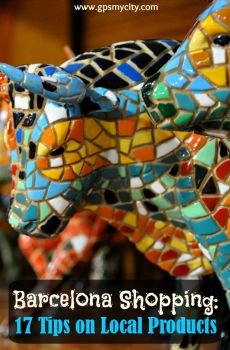
Passeig de Gracia (Gracia Avenue), Barcelona (must see)
Gràcia Boulevard, located in the heart of Barcelona’s Eixample district, is one of the city’s most significant shopping and business areas. Formerly known as "Jesus Road", it was initially a rural lane connecting Barcelona to the then-separate town of Gràcia. The avenue’s development began in 1821 but was delayed by epidemics and eventually resumed in 1827. The 42-meter-wide boulevard soon became a favorite spot for the aristocracy to showcase their horse-riding skills and luxurious carriages.
By the early 1900s, Gràcia Boulevard had transformed into the city’s most fashionable street. The architect Pere Falqués i Urpí designed its renowned wrought-iron benches and street lamps in 1906, largely adding to its unique charm.
During the Spanish Civil War, the Basque government was based here, and the Catalan poet Salvador Espriu lived in Casa Fuster (at Number 132). Today, Gràcia Boulevard is the most expensive street in Barcelona and Spain, comparable to the Champs-Élysées in Paris or 5th Avenue in New York City. The avenue is lined with upscale stores, though more affordable dining options can be found in its side streets.
More notably, the avenue is home to remarkable Modernist architecture by famous architects such as Antoni Gaudí, Josep Puig i Cadafalch, and Lluís Domènech i Montaner, concentrated along the main street and some of the adjacent streets as well. Major highlights include Gaudí's “La Pedrera” building and the so-called “Block of Discord,” a cluster of Modernist masterpieces. With most mansions here belonging to Barcelona's wealthiest citizens of the late 19th and early 20th centuries, there's no shortage of richly and tastefully decorated facades to behold. Buildings, balconies, stained-glass windows, and carved doors are all within sight.
Day or night, Gràcia Avenue offers a fantastic opportunity for architecture buffs to crane their necks. In addition to these, the Gaudí-designed pavement tiles depicting abstract sea creatures make it a top destination for strollers, offering a visual feast of Barcelona’s rich urban heritage.
Tip:
This boulevard is particularly magical in summer when the locals compete between themselves decorating the streets as part of the Gràcia Festival, which, together with the live music played everywhere, makes it a really fun place to be.
By the early 1900s, Gràcia Boulevard had transformed into the city’s most fashionable street. The architect Pere Falqués i Urpí designed its renowned wrought-iron benches and street lamps in 1906, largely adding to its unique charm.
During the Spanish Civil War, the Basque government was based here, and the Catalan poet Salvador Espriu lived in Casa Fuster (at Number 132). Today, Gràcia Boulevard is the most expensive street in Barcelona and Spain, comparable to the Champs-Élysées in Paris or 5th Avenue in New York City. The avenue is lined with upscale stores, though more affordable dining options can be found in its side streets.
More notably, the avenue is home to remarkable Modernist architecture by famous architects such as Antoni Gaudí, Josep Puig i Cadafalch, and Lluís Domènech i Montaner, concentrated along the main street and some of the adjacent streets as well. Major highlights include Gaudí's “La Pedrera” building and the so-called “Block of Discord,” a cluster of Modernist masterpieces. With most mansions here belonging to Barcelona's wealthiest citizens of the late 19th and early 20th centuries, there's no shortage of richly and tastefully decorated facades to behold. Buildings, balconies, stained-glass windows, and carved doors are all within sight.
Day or night, Gràcia Avenue offers a fantastic opportunity for architecture buffs to crane their necks. In addition to these, the Gaudí-designed pavement tiles depicting abstract sea creatures make it a top destination for strollers, offering a visual feast of Barcelona’s rich urban heritage.
Tip:
This boulevard is particularly magical in summer when the locals compete between themselves decorating the streets as part of the Gràcia Festival, which, together with the live music played everywhere, makes it a really fun place to be.
Want to visit this sight? Check out these Self-Guided Walking Tours in Barcelona. Alternatively, you can download the mobile app "GPSmyCity: Walks in 1K+ Cities" from Apple App Store or Google Play Store. The app turns your mobile device to a personal tour guide and it works offline, so no data plan is needed when traveling abroad.
Passeig de Gracia (Gracia Avenue) on Map












Sight Name: Passeig de Gracia (Gracia Avenue)
Sight Location: Barcelona, Spain (See walking tours in Barcelona)
Sight Type: Attraction/Landmark
Guide(s) Containing This Sight:
Sight Location: Barcelona, Spain (See walking tours in Barcelona)
Sight Type: Attraction/Landmark
Guide(s) Containing This Sight:
Walking Tours in Barcelona, Spain
Create Your Own Walk in Barcelona
Creating your own self-guided walk in Barcelona is easy and fun. Choose the city attractions that you want to see and a walk route map will be created just for you. You can even set your hotel as the start point of the walk.
La Rambla Walking Tour
One of the main streets in central Barcelona, La Rambla is popular with tourists and locals alike. Connecting the city’s old port with Plaça de Catalunya, it is filled with cultural and historic landmarks, as well as many terraces, restaurants, shops and street artists. Spanish poet, Federico García Lorca once said it was “the only street in the world which I wish never ended.”
Start... view more
Tour Duration: 1 Hour(s)
Travel Distance: 2.3 Km or 1.4 Miles
Start... view more
Tour Duration: 1 Hour(s)
Travel Distance: 2.3 Km or 1.4 Miles
Barcelona Introduction Walking Tour
According to legend, Barcelona was founded by the mythological Greek hero Hercules on one of his expeditions, when a storm hit his boats. The first eight boats managed to escape without damage, but the ninth was lost at sea. Hercules found his lost friends some days later on the coast, all safe and sound. The boat's crew, taken by the beauty of the coastal landscape, decided to stay. On that... view more
Tour Duration: 3 Hour(s)
Travel Distance: 5.7 Km or 3.5 Miles
Tour Duration: 3 Hour(s)
Travel Distance: 5.7 Km or 3.5 Miles
Picasso's Barcelona Walking Tour
Pablo Picasso – the great Spanish painter and sculptor – developed his style in Barcelona where he spent the formative years of his life, from the ages of 14 to 23. It is said that when the master spoke nostalgically of home, he actually meant the Catalonian capital, despite having been born in Malaga.
This self-guided walk will take you to the Picasso Museum, the bar-restaurant and the art... view more
Tour Duration: 2 Hour(s)
Travel Distance: 4.2 Km or 2.6 Miles
This self-guided walk will take you to the Picasso Museum, the bar-restaurant and the art... view more
Tour Duration: 2 Hour(s)
Travel Distance: 4.2 Km or 2.6 Miles
Gothic Quarter Walking Tour
A walk through the Gothic Quarter – Barcelona’s oldest part, dating from the Roman era – is like a journey through time. The typical Roman grid plan is still visible in the quarter's layout. Only a few roads are open for car traffic, so there is little in the way of enjoying the narrow, atmospheric streets filled with high-quality architecture, numerous boutiques, and coffee shops.... view more
Tour Duration: 2 Hour(s)
Travel Distance: 1.8 Km or 1.1 Miles
Tour Duration: 2 Hour(s)
Travel Distance: 1.8 Km or 1.1 Miles
Antoni Gaudí's Masterpieces Walking Tour
Antoni Gaudi, a seminal figure in the Catalan Modernism movement, is one of the top architects of the 20th century. The unique technique and use of natural forms in his works stand out from the pack and have left an indelible mark on the face of Barcelona.
Our journey through Gaudi's Barcelona begins at the Güell Palace, by far the most budget-friendly of his projects. Located near La... view more
Tour Duration: 2 Hour(s)
Travel Distance: 4.6 Km or 2.9 Miles
Our journey through Gaudi's Barcelona begins at the Güell Palace, by far the most budget-friendly of his projects. Located near La... view more
Tour Duration: 2 Hour(s)
Travel Distance: 4.6 Km or 2.9 Miles
Montjuic Walking Tour
Montjuic is a hill in Barcelona which offers a variety of great attractions of historic, cultural, and architectural value. Here, you can watch a spectacular water show at the Magic Fountain of Montjuic, visit the place where matadors faced the bulls in the past, and explore the ancient Montjuic Castle with its breathtaking views.
A convenient start point, Placa d'Espanya is the second... view more
Tour Duration: 3 Hour(s)
Travel Distance: 5.0 Km or 3.1 Miles
A convenient start point, Placa d'Espanya is the second... view more
Tour Duration: 3 Hour(s)
Travel Distance: 5.0 Km or 3.1 Miles
Useful Travel Guides for Planning Your Trip
10 Sightseeing Walks During Covid-19
Borders closed, flights canceled. As countries across the globe scrambling to curb the spread of coronavirus, it is nearly impossible to travel these days. For those with wanderlust at heart, living without exploring is a really tough challenge.
But even in times of hardship like this, one should...
Barcelona Souvenir Shopping: 17 Uniquely Spanish Things to Buy
Spain, in general, and Barcelona, in particular, are a treasure trove of all things exciting. Set your foot in Barcelona and you'll be spoiled for the choice of things worth trying and taking home. Before your head starts spinning, check this guide out to put yourself in the right...
Top 10 Spanish Foods and Drinks to Try in Barcelona
In the countries like Spain, food is a national heritage and cultural attraction in its own right. The latter is even more true of Catalonia in general and Barcelona in particular. Presented here are the 10 staples of Catalan food tradition, missing which would be a gastronomical...









